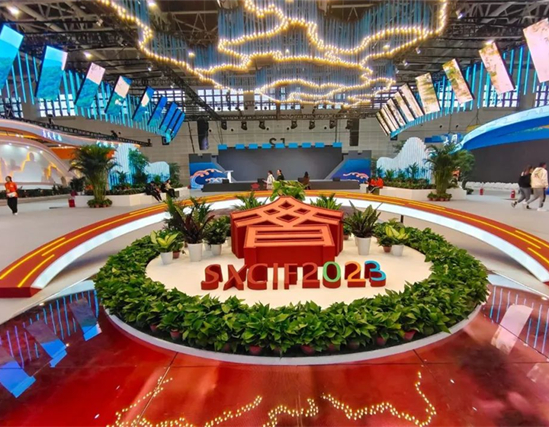US, China cooperate on green energy in rural areas
Updated: 2023-10-17
Innovation in rural area-green energy development and boosting collaboration between the United States and China in science and technology are being emphasized at a "smart village" forum.
More than 50 experts, professors, local entrepreneurs, environmental and social organizations from many countries are participating in the Institute of Electrical and Electronics Engineers Smart Village Forum (ISV) in Shanxi province on Sunday and Monday.
Participants in the forum, titled "Green Low-Carbon and Smart Village", discussed environmental governance topics such as achieving energy transition, using advanced technology to assist poverty-stricken regions globally in accessing affordable and clean energy, improving energy efficiency, and promoting green and sustainable development.
A new demonstration project in Changzhi, a city in southeast Shanxi province, was featured at the forum, showcasing the current progress and practical results achieved by ISV. The project has effectively incorporated solar photovoltaic power and clean-heating technologies and products for residents.
The ISV working group has partnered with leading Chinese and international higher-education institutions to create energy models and projects suited to specific local conditions in other cities such as Chongqing, Gansu and Heilongjiang.
Daniel Kammen, a Nobel Peace Prize laureate and energy professor at the University of California, Berkeley, and his laboratory, have worked closely with scholars and students from Tsinghua University, Chongqing University and North China Electric Power University to research renewable energy conservation and intelligent models from an academic perspective.
"We develop mathematical models of the grid. There's lots of interesting physics. There's lots of interesting science. My partnerships in China have been very productive," Kammen told China Daily. "Low-cost solar, better batteries and smart sensors. We build models that become real. My laboratory is very much based around not just basic science, but also the mission of decarbonizing the power grid and making our economy green.
"Just like the tensions that existed between the Soviet Union and the US over politics and geopolitics in the '70s and '80s, one lesson that I think scientists learned on both sides, both in the Soviet Union and in the US, is that we need to keep the scientific channels open," he said.
Kammen said that science cooperation and exchange are important at this moment. "The US and China are the G2. I like to say we are the G2 of energy, the two biggest consumers of energy and the two biggest polluters in terms of greenhouse gases," he said. "There is no climate solution unless the US and China find ways to work through their differences."
"This is a technology exchange and a global need. We are working on clean energy under climate change and fulfilling the need for decarbonization," said Xiaofeng Zhang, the vice-president of ISV and president of Global Green Development Alliance.
The ISV has extended its efforts not only within China but also across diverse regions, including Africa, Latin America, South Asia and North America, with the primary focus on delivering eco-friendly and cost-effective energy solutions to underprivileged communities who have limited access to environmental resources.
"We are doing more than only energy transferring, but also internet, electrical machinery, telecommunications and telemedicine. We introduce all of these based on the community's needs," said Rajan Kapur, the president of ISV. "We ask the community what they want to do, and based on that, we tell them what technology might be appropriate, what technology can be locally sourced."
ISV is also collaborating with Chinese local companies and organizations.
"It is also a business-development cooperation, because when you take technology and introduce it into society, you cannot just drop it over there," he said. "The capacity does not exist to use the technology; the infrastructure does not exist. So we also help with the business modeling, the governance of the enterprises that get set up," he said.
Kapur said that what they are trying to do is to have a long-term impact, and ISV has not only created scientific and business models in those regions but also has deployed supportive equipment for more than 20 or 30 years.
He emphasized that ISV's ultimate objective is to ensure affordable and clean energy access for 1 billion people worldwide through technology and cooperation between the US and China.
Additionally, ISV expects to leverage its resources to assist local communities and businesses in achieving sustainable economic growth and regionwide improvements.
"What we should remember is that it is advancing technology for all of humanity," Kapur said.



